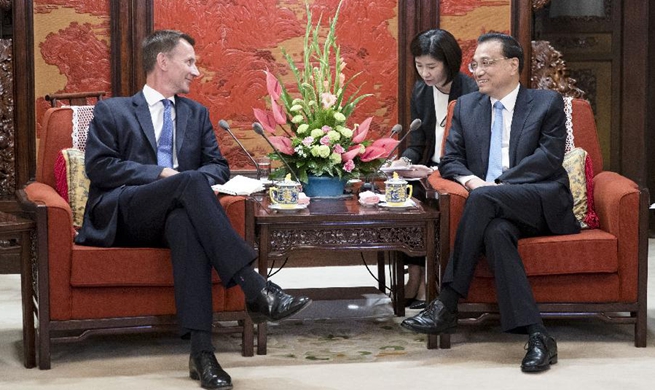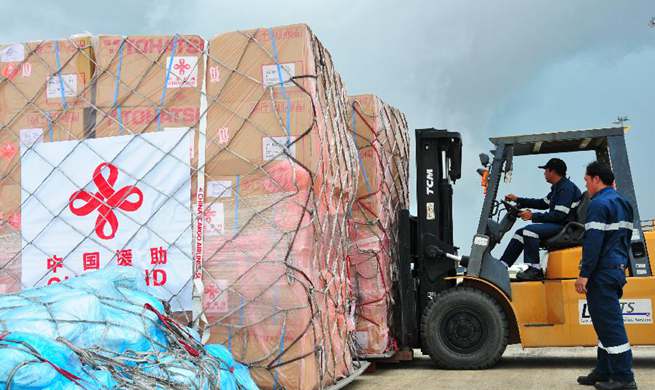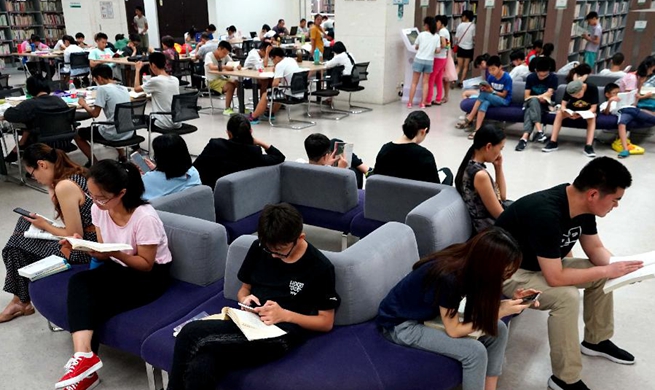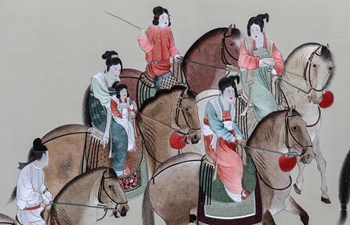NAIROBI, July 31 (Xinhua) -- Kenya on Tuesday launched an export strategy in order to eliminate the country's widening trade deficit.
Deputy President William Ruto told a trade forum in Nairobi that the Integrated National Export Development and Promotion Strategy contains a roadmap to expand the country's exports so as to achieve a trade surplus in the medium term.
"The strategy will help to move country's exports from the equivalent of eight percent of Gross Domestic Product (GDP) to 25 percent of GDP by 2022," Ruto said during the official opening of the Kenya Trade Week and Exposition.
The weeklong event aims to provide a platform for Kenyan manufacturers to discuss ways of addressing challenges that affect them.
The export strategy aims to boost external trade by ensuring that Kenya prioritizes on value addition of raw materials.
Ruto said the strategy aims to focus on eight sectors including textiles and apparel, agriculture, livestock, fisheries, oil and gas, mining and handicrafts, noting that exports are vital to fuel economic growth through job creation and foreign exchange revenue.
The deputy president said a Cabinet Subcommittee on exports has been established to bring on board key ministries to push for development of exports.
According to government data, Kenya imported goods worth 17 billion U.S. dollars against exports of six billion dollars in 2017.
Ruto said Kenya's balance of trade has been widening in the past decade as imports have been growing at a faster pace than exports.
He noted that in order to support the export sector, Kenya is considering establishing an export insurance guarantee scheme to help exporters penetrate into new international markets.
Peter Munya, the Cabinet Secretary in the Ministry of Industry, Trade and Cooperatives, said Kenya's exports are vulnerable to external shocks due to a narrow export base.
Munya said in 2017, five commodities accounted for approximately 56 percent of all export revenues while 13 countries absorbed 70 percent of all export volumes.
He added that Kenya will seek to exploit all the bilateral trade agreements that it has signed around the world in order to seek additional markets.
He noted that through the Common Market for Eastern and Southern Africa, the East African Community (EAC), Africa Growth and Opportunity Act and EAC-European Union Partnership Agreement, Kenyan goods have preferential access to over one billion consumers.
Munya said most of Kenya's manufactured exports emanate from the Export Processing Zones.
"We are now prioritizing use of the Special Economic Zones (SEZ) which have world class infrastructure to produce globally competitiveness products," he said.
He noted that the government has already licensed two SEZs which will be fully operational by end of 2019.
Chris Kiptoo, the Principal Secretary in the Ministry of Industry, Trade and Cooperatives, said manufactured exports to the EAC has been declining in the past five years due to tariff and non-tariff barriers.
"We have therefore turned our focus to the rest of the African continent where Kenya has signed preferential trade agreements," Kiptoo said.
He noted that the government has rolled out a raft of incentives in order to boost the local manufacturing sector.













